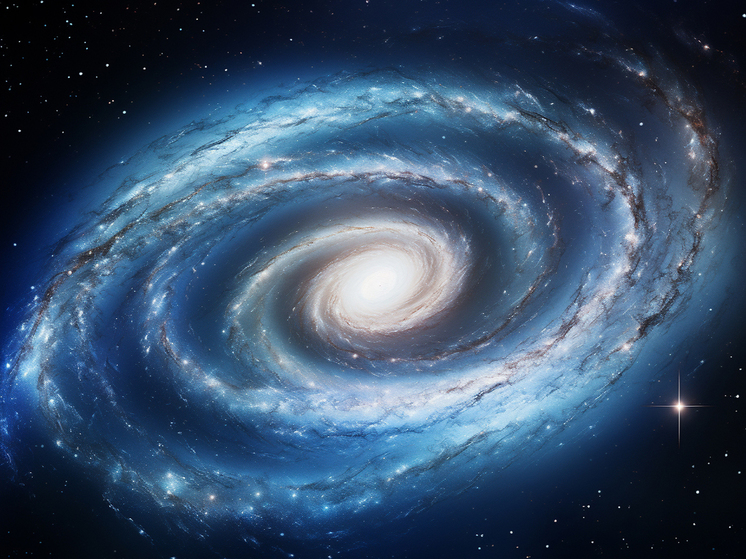New study paints a chilling picture of the future
No one likes to think about the impending end of the world, but a new study has given a chilling glimpse of what might be in store. Astronomers warn that there is a 50 percent chance that the Andromeda galaxy, also known as Messier 31, will collide with the Milky Way in the next 10 billion years, engulfing Earth in the process.
 Photo: ru.freepik.com
Photo: ru.freepik.com
While that sounds like bad news, the Daily Mail notes, the 50/50 chance is actually less likely than scientists previously thought. If the collision were to happen, planets and stars in the two galaxies would collide, forming a single supergalaxy known as the Milky Nebula.
There is a small chance that our Sun could collide with another star, which could change our position relative to the Sun and threaten life on Earth if — the Daily Mail adds a significant caveat — it still exists by then.
The new study, by an international team of astronomers including Professors Alice Dizon and Carlos Frank from Durham University, says our own Milky Way is widely believed to be on a collision course with a neighbouring galaxy, an event that is predicted to occur in about five billion years. But the researchers say it is not certain that the Milky Way will collide with Andromeda.
Andromeda, located 2.5 million light years away, is the closest large galaxy to our own galaxy, the Milky Way, the Daily Mail explains. Astronomers have long known that Andromeda and the Milky Way are attracted to each other by gravity. They are expected to come together in about 4.5 billion years to form a giant «elliptical galaxy» shaped like an elongated circle, NASA reports.
But the authors of the new study say the nature of the merger could be due to an overlooked «interfering factor.» In particular, the strong gravitational influence of other galaxies in the so-called Local Group cannot be ruled out, which could affect their direction.
The Local Group, as the Daily Mail explains, is a group of more than 30 galaxies that includes both the Milky Way and Andromeda. Other galaxies in the Local Group include the Large Magellanic Cloud, the Triangulum Galaxy (M33), Leo I, and NGC 6822.
Using observations from the Gaia and Hubble space telescopes, the researchers estimated future scenarios for the evolution of the Local Group over the next 10 billion years. They found that the next most massive galaxies in the Local Group, M33 and the Large Magellanic Cloud, clearly and dramatically affect the orbits of the Milky Way and Andromeda. «Uncertainties in the current positions, motions, and masses of all the galaxies leave room for very different outcomes,» the scientists acknowledge.
The new study was published as a pre-release version on the arXiv server, meaning it has not yet been peer-reviewed.
The chances that the Milky Way and Andromeda will not merge in the next 10 billion years are «close to 50 percent,» astronomers conclude.
If a fatal collision does occur, there is, of course, a chance that it will happen after our sun runs out of hydrogen and goes dark. In the very unlikely event of a collision between the Milky Way and Andromeda, which would happen if humans were still alive on Earth, humanity might just survive it, the Daily Mail notes.
NASA says the sun and the planets orbiting it «will survive the catastrophe, but will take on new coordinates in space.»
University of Michigan astronomy professor Eric Bell, who was not involved in the new study, agreed that «it is very likely that nothing will happen to us» if the galaxies collide.
When the merger occurs, the Sun will likely move into a new region of our galaxy, but the Earth and the rest of the solar system will not be in danger of being destroyed. However, the Daily Mail continues, one potential danger of a galaxy merger could be a collision (or near-collision) between our star and another star, although the likelihood of this happening is extremely small.
«Galaxy collisions are only dangerous because of the small increase in the chance of stars colliding,» Professor Bell told MailOnline. Even a close encounter with another star — a «close pass» — would affect our orbit, which he said would be «very bad».
«A close pass changes our orbit, bringing us closer to or further from the Sun,» he explained. «Our fate will depend on how our orbit changes. So we'll either escape the Solar System (in which case we'd slowly freeze to death over a period of months) or be incinerated by the Sun (which could happen very quickly or take months, depending on what orbit we end up in).»


